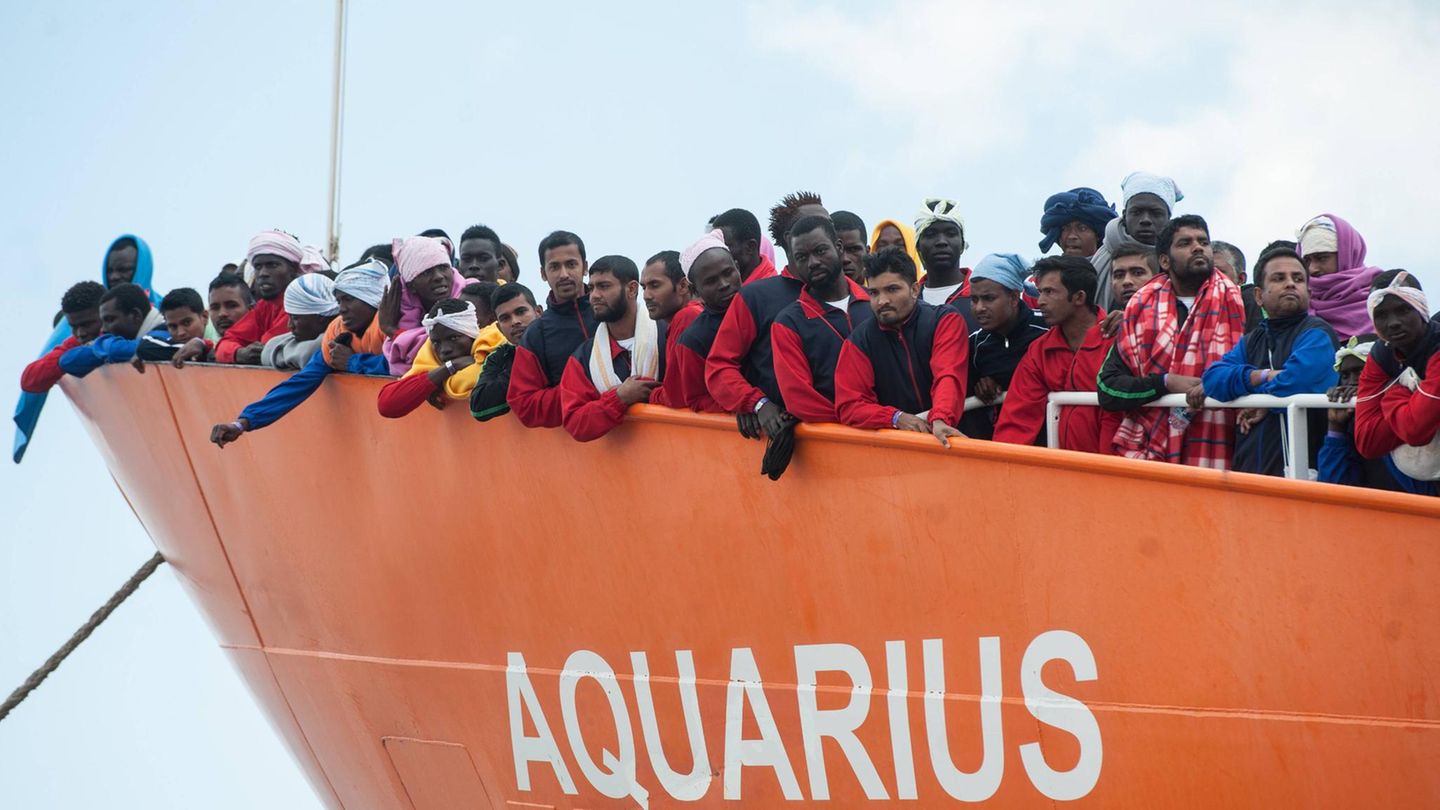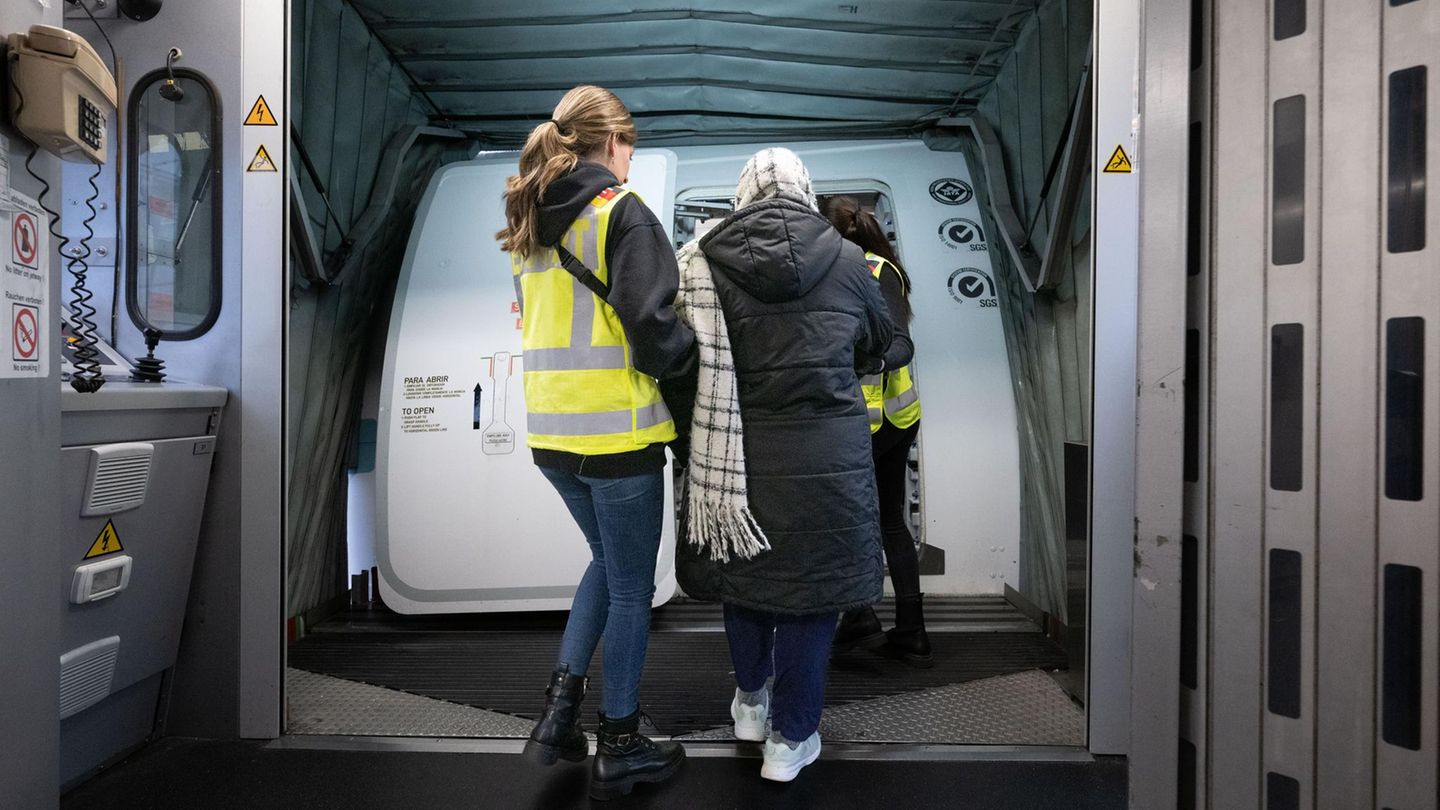Questions & answers
How a new EU law should provide more deportation
Copy the current link
Add to the memorial list
Harder sloping racks, sharper controls, possible detention: A new law should accelerate the return of rejected asylum seekers. How and when it comes is open.
The question of rejected asylum seekers in the EU repeatedly causes heated debates – especially after attacks such as Magdeburg and Aschaffenburg. Many European governments have long been calling for stricter rules in order to be able to send migrants to their countries of origin more quickly. The EU Commission has now presented a proposal for a new regulation. Questions and answers to central points:
Why does the EU need new rules for returns?
According to the EU Commission, only about a fifth of the people who are obliged to leave actually return to the countries of origin. Many remain because countries of origin refuse to accept or take procedures too long. This is considered a big problem, especially in times of high migration numbers. With the new rules, the Commission wants to make processes more efficient and ensure that more rejected asylum seekers actually return.
What does the Commission’s bill provide?
Rejected asylum seekers should be obliged, for example, to actively participate in their return. If the cooperation is refused, there are consequences – such as reducing services or a longer entry ban.
In addition, stricter rules for people who are classified as a security risk should also apply. For example, the reasons for detention should be expanded.
An important point is also the mutual recognition of return decisions. This means that deportation transfers that were issued in an EU country should also apply automatically in other Member States. For example, a person who was obliged to return in a country could not simply continue to another EU country to avoid the procedure.
Should there be return centers?
Yes, the proposal also includes the possibility of return centers. This means institutions outside the EU, in which migrants are accommodated that have been deported from the EU or are waiting for their return to their home country. The idea is that these centers are supposed to facilitate and prevent migrants from returning to Europe. Human rights standards must be observed and implementation must be monitored. Minors and families with children are excluded.
The Swedish Minister of Migration Johan Forsssell recently emphasized that the EU Commission had to take on a leading role in this area. “We are 27 different member states that all have the same challenges, but we cannot have 27 different return centers,” he told the dpa.
Is there something like the Italian “Albania model”?
The so-called Albania model of Italy initially plays no role in the commission’s plans. It states that migrants who are still waiting for their asylum decision are housed in third countries – in this case Albania.
However, the model is legally controversial. The Italian government under Giorgia Meloni has already failed before several dishes. Now the European Court of Justice (ECJ) is also dealing with the legality of the plans.
Why is a new law necessary?
From the perspective of EU Commissioner Brunner, the return plans are the “still missing part according to the asylum and migration pact”. And a number of Member States see the EU asylum reform decided in spring as inadequate. Many doubt that she can solve the current problems. In addition, the implementation of the asylum reform could drag on until June 2026 due to the transition period.
With the controversial reform, Member States are obliged, for example, to uniform procedures at the external borders so that it can be determined quickly whether asylum applications are unfounded and the refugees can then be deported faster and directly from the outside border.
Most people apply for asylum in Germany from these countries

9. Guinea
A smaller number of asylum seekers from Guinea and the Ivory Coast (Côte d’Ivoire) mostly seeks refuge in France.
Between New Year and the end of May 2024, 1623 people from Guinea in Germany applied for asylum.
© Pacific Press Agency / Imago Images
More
Open the image subtitle
Back
Further
When can the law come into force?
This is open. According to the presentation of the draft by the responsible EU Commissioner Brunner, this must be checked and accepted by the European Parliament and the Council of the European Union. The exact schedule for implementation depends on the negotiations between the EU institutions.
How many deportations are there in Germany?
As the Federal Ministry of the Interior announced in January, there were a total of 18,384 returns in the first eleven months of 2024. Turkey is in first place among the main countries of origin: 1720 Turkish citizens had to leave Germany in 2024. In second place stood with 1678 deportations, followed by people from Syria, Afghanistan, Northern Macedonia, Albania, Serbia and Iraq.
Dpa
RW
Source: Stern
I have been working in the news industry for over 6 years, first as a reporter and now as an editor. I have covered politics extensively, and my work has appeared in major newspapers and online news outlets around the world. In addition to my writing, I also contribute regularly to 24 Hours World.




